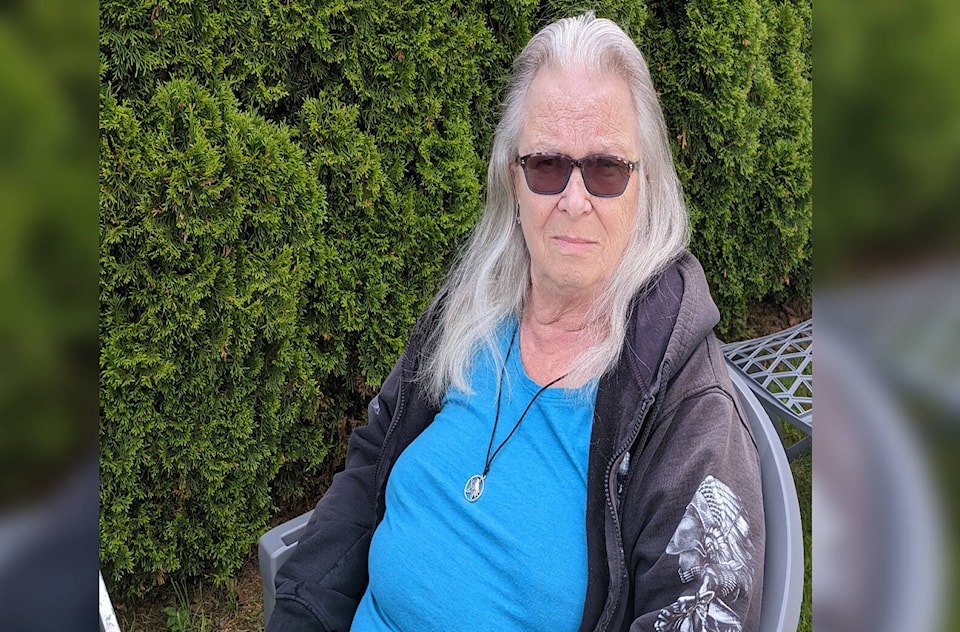Bev Fisher has had the same dream three times over the last few weeks.
She is walking the street with a suitcase in hand and two cats in tow, feeling like she has nowhere to go.
“I’m terrified I’m going to end up homeless,” the 73-year-old Hope resident says, her voice breaking with emotion.
Fisher currently lives in Silver Creek, but the place she has called home is being sold, soon, and she has to get out. It’s no secret that rental rates have risen sharply over the last few years, and Fisher is discovering how borderline impossible it is to find a rental unit within her price range.
“There are one-bedrooms going for $1,900,” she lamented. “That’s more than my pension.”
Hope may be feeling the rental crunch more than most other places because of the Trans Mountain pipeline. As construction has begun, and continues, already scarce rental inventory has been taken by workers.
As of Friday morning, June 10, there were four rental listings on Facebook Marketplace.
Three were for houses well beyond Fisher’s budget (one at $2,900 and two at $3,200). One listing for a one-bedroom house/cabin without electricity is priced at $1,450.
“You see the odd one available, but most of them are $2,000 and up,” Fisher said. “I could apply for a SAFER (Shelter Aid for Elderly Residents) rent subsidy once I’m in (a place), but to get in I have to have the month’s rent plus half-a-month’s rent for security deposit. That’s just not possible, and until I get in I can’t even apply for it.”
Fisher said it’s important for her to stay in Hope, where all of her supports are.
RELATED: Canadian renters see largest increase in 3 years between April and May
RELATED: Renter rebate off the table, but $600 rent supplements coming for vulnerable groups
She has health issues and doesn’t drive. She has friends in Silver Creek who will take her places, though she doesn’t like to ask too often. Fisher depends on CARE Transit when she needs to get to a doctor’s appointment somewhere ‘down the valley.’
“If I move out of the area, I won’t have any of those supports,” she said. “I’ll be alone.”
If Fisher can’t find a place in Hope, she thinks she’ll end up in Alberta, where she has a daughter.
She jokes that she hates snow, adding that rent in that province may not be as high as it is in Hope, but it’s still pricey. She also said she’d have to sell all of her furniture, because she couldn’t afford to move it.
Overall, the situation has left her extremely stressed out. She says she’s sleeping only three or four hours a night.
“Every time I turn around I break down in tears,” she says. “I’m on anti-depressants, but they’re not that strong and I feel I need something stronger because of this. But I don’t want to go there. It’s just very frustrating.
“I am very angry, but I try to set that aside because I don’t want to live my life being angry. I do my best to be happy but right now I am not very happy at all.”
Affordable housing has been on the District of Hope’s radar for a long time.
In 2005 a study was conducted Surrey-based MVH Urban Planning & Design Inc.
That study revealed a need for a “broader range of housing types, forms, and quality,” but the authors noted that policies were not in place to support innovations like small lot housing, suites, and coach houses/granny flats.
Just last year (2021), the District of Hope heard a report from the Director of Community Development noting that while Hope’s population rose 3.6 per cent between 2011 and 2016, rental vacancy rates continued to be very low.
The report acknowledged rental prices rising 9.1 per cent between 2006 to 2016. At the time, the rental rate for a two-bedroom was pegged at $1,200.
Report analyst Brendan Dawe, from Urbanics Consultants Ltd., told District of Hope council that “forward priorities should include taking action to meet market-rate housing needs, addressing non-market housing needs, and enhancing the supply of secure rental housing. Taking action to improve housing affordability and preparing for an aging population should also be priority.”
In Fisher’s view, that hasn’t happened. “We need more subsidized housing,” she said. “We have one subsidized building in town and I’ve had my name in there for three months now, but there’s been nothing. I keep hoping they’ll give me a call and say, ‘We’ve got a place. Do you want it?’ But it’s not happening.”
